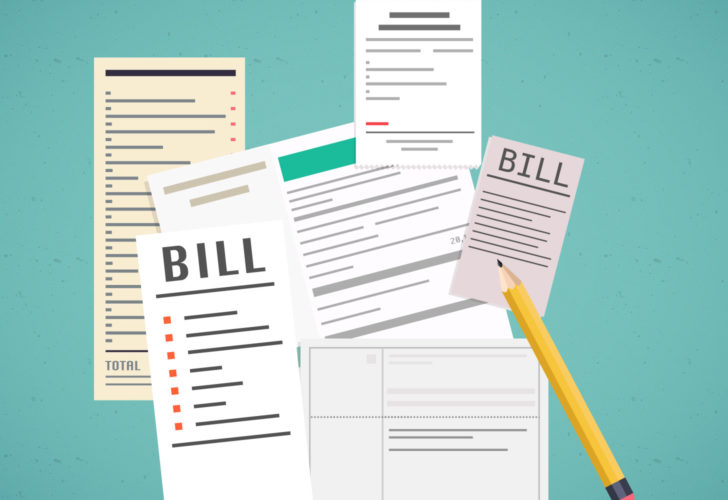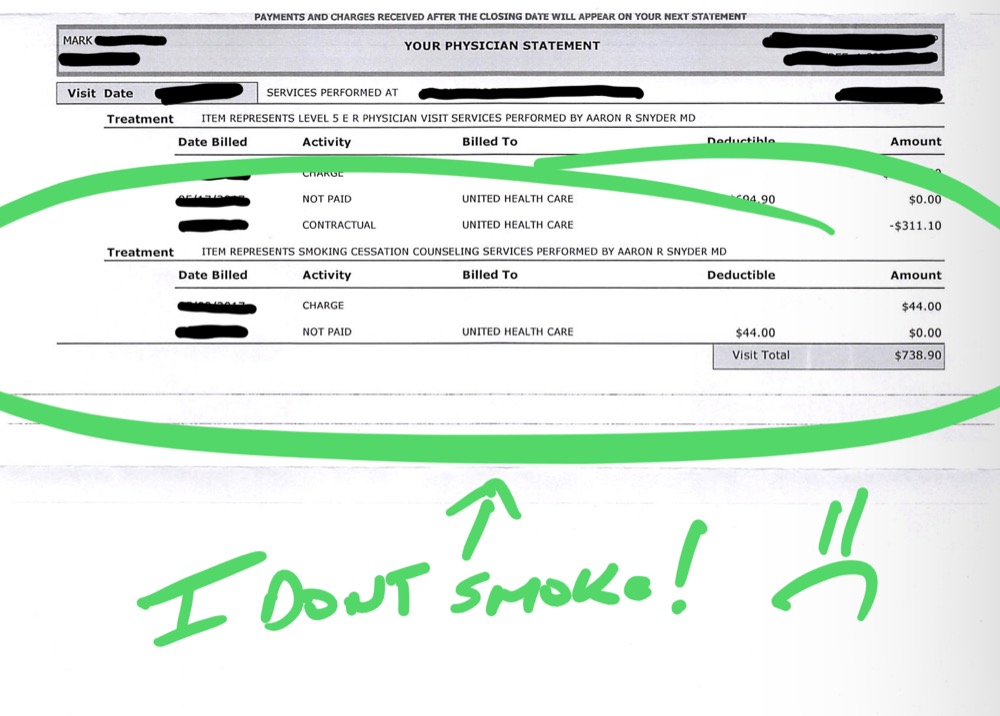Become An Expert at Reading Your Medical Bill
By The Bailey Group Marketing
Published June 9, 2017

Medical bills are almost up there with cell phone bills when it comes to their complexity and density of information, hence why many clinics and hospitals have begun to lump together costs instead of itemizing them – making it very difficult to see exactly what you are paying for.
In order to perfectly illustrate the point above, I present to you my medical bill from a recent unscheduled visit to my local ER.
As you can see, there’s no itemization or explanation of how those numbers were reached; just one big “Total Due,” even after I paid $600+ before leaving the hospital. Now, I could just pay the total balance and be on my merry way, but, as educated health care consumers we know that mistakes can happen when it comes to this stuff.
In order to prevent those mistakes from costing us hundreds (sometimes thousands) of dollars we need to have more information at our disposal than just a lump sum bill provides. Luckily, the extra information you need is often only a phone call or email away.
Gather These Three Key Documents
When you receive your medical bills there are three documents that you need to compare to help you understand if you are being billed only for the services you received:
- A list of services performed – this document is given to you when you leave the doctor’s office or health facility.
- The bill from the doctor or health facility – this is a list of services performed and the charges associated with each service (which should match the list of services performed document given to you when you leave the facility). You have the right to request an itemized bill from the facility.
- Explanation of benefits (EOB) from your insurance provider, Medicare or other payer, explaining how much of the bill was paid by insurance.
Start by reading over each of the documents individually and noting any charges that you don’t understand or items that you don’t think you should have been charged for.
Most bills will use codes for each of the services provided, which can make it even more difficult to read. To better understand what these codes mean, use a medical dictionary or encyclopedia like Medilexicon. Then compare the documents against each other, making sure that the charges match up.
Check for Errors
You’ll also want to make sure there are no data entry errors including numbers with an accidental zero added on (e.g., “10” instead of “1” X-ray). Check for duplicate listings of procedures and medications that you do not think were administered. Also, check for procedures that never even happened to begin with.
Want another real world example of this? You got it.
See the bill below? I was charged $44 for smoking cessation counseling services from my ER visit last month. The problem? I’m not a smoker! If the provider that sent me the bill wouldn’t have itemized the charges I probably would have paid the full amount without batting an eye. Now, at least I’m going to save myself $44 to be used on a nice steak dinner (😁) or gas for the car (😩).
If you find suspicious charges on your bill like I did, don’t hesitate to contact the health care facility’s billing department. They’re not in the business of scamming people, even though you may sometimes feel otherwise. If mistakes were made on your bill, they’ll want to know and get that corrected.
P.S. I was told by the provider to “write them a letter” in order to properly dispute it.
Take a Proactive Approach
Obviously there are certain cases where you can’t be proactive, but next time you visit your doctor or health care provider there are a few best practices you can follow in order to prevent yourself from getting charged for services that weren’t provided:
- Verify with the receptionist or check-out desk how your visit will be coded when it’s submitted to your insurance provider.
- Take notes as you are treated, noting exactly what services are performed and the medications you’re being given. Consider bringing a family member or friend to do this for you.
- If you’re going to be charged for a hospital stay, call the billing department before your procedure to ask if there are any supplies you can bring with you to avoid high charges such as a box of tissues, extra blankets or pajamas.






